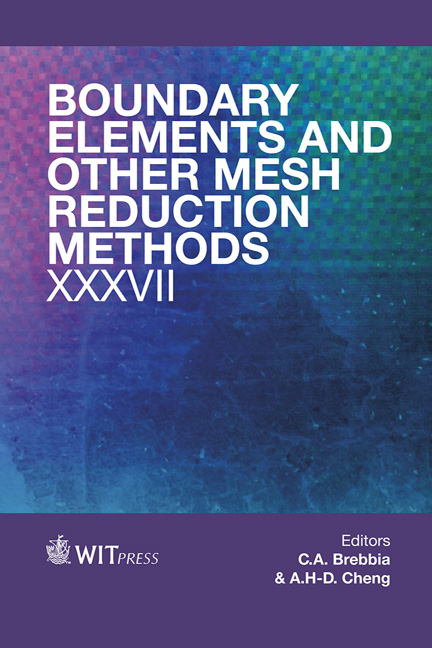A New Method For The Numerical Evaluation Of Domain Integrals In A 3D Boundary Element Method For Transient Heat Conduction
Price
Free (open access)
Transaction
Volume
57
Pages
11
Page Range
189 - 199
Published
2014
Size
378 kb
Paper DOI
10.2495/BE370161
Copyright
WIT Press
Author(s)
Y. Dong, J. Zhang, G. Xie, C. Lu, L. Han, P. Wang
Abstract
A new method is proposed for the numerical evaluation of domain integrals in a 3D boundary element method. These integrals arise in the solution of the transient heat conduction problems, using a time-dependent boundary integral equation method named as pseudo-initial condition method. As the time-dependent kernel in the domain integral is close to singular when small time step is used, a straightforward application of Gaussian quadrature may produce large errors, and thus lead to instability of the analysis. In this paper, a coordinate transformation coupled with an element subdivision technique is presented. The coordinate transformation is denoted as (α, β, γ) transformation, while the element subdivision technique considers the position of the source point, the property of the time-dependent fundamental solution and the relations between the size of the element and the time step. With the coordinate transformation and the element subdivision technique, more Gaussian points are shifted towards the source point, thus more accurate results can be obtained. Numerical examples have demonstrated the accuracy and efficiency of the proposed method.
Keywords
time-dependent, domain integrals, transient heat conduction, boundary element method, element subdivision technique





